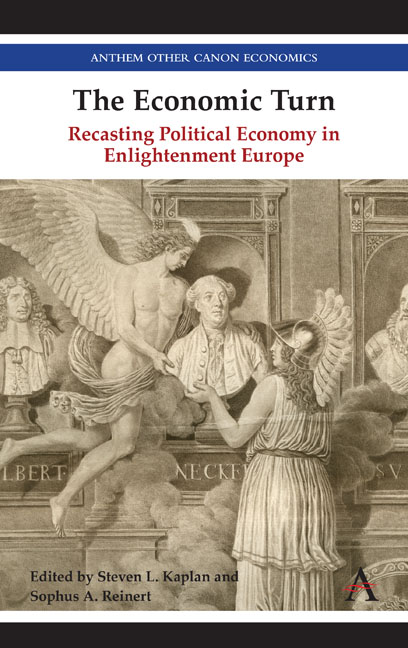Refine search
Actions for selected content:
26946 results in Economic history
‘We can't pay’: how Italy dealt with war debts after World War I
-
- Journal:
- Financial History Review / Volume 26 / Issue 2 / August 2019
- Published online by Cambridge University Press:
- 14 March 2019, pp. 197-222
-
- Article
- Export citation
Credit, confidence and the circulation of Exchequer bills in the early financial revolution
-
- Journal:
- Financial History Review / Volume 26 / Issue 1 / April 2019
- Published online by Cambridge University Press:
- 12 March 2019, pp. 63-80
-
- Article
- Export citation
Money and modernization in early modern England
-
- Journal:
- Financial History Review / Volume 25 / Issue 3 / December 2018
- Published online by Cambridge University Press:
- 07 March 2019, pp. 231-261
-
- Article
- Export citation
FHR volume 25 issue 3 Cover and Back matter
-
- Journal:
- Financial History Review / Volume 25 / Issue 3 / December 2018
- Published online by Cambridge University Press:
- 07 March 2019, pp. b1-b2
-
- Article
-
- You have access
- Export citation
FHR volume 25 issue 3 Cover and Front matter
-
- Journal:
- Financial History Review / Volume 25 / Issue 3 / December 2018
- Published online by Cambridge University Press:
- 07 March 2019, pp. f1-f3
-
- Article
-
- You have access
- Export citation
EDITORIAL NOTE
-
- Journal:
- Revista de Historia Economica - Journal of Iberian and Latin American Economic History / Volume 37 / Issue 1 / March 2019
- Published online by Cambridge University Press:
- 15 March 2019, pp. 1-7
- Print publication:
- March 2019
-
- Article
-
- You have access
- HTML
- Export citation
RHE volume 37 issue 1 Cover and Front matter
-
- Journal:
- Revista de Historia Economica - Journal of Iberian and Latin American Economic History / Volume 37 / Issue 1 / March 2019
- Published online by Cambridge University Press:
- 15 March 2019, pp. f1-f3
- Print publication:
- March 2019
-
- Article
-
- You have access
- Export citation
WORLD TRADE, 1800-1938: A NEW SYNTHESIS
-
- Journal:
- Revista de Historia Economica - Journal of Iberian and Latin American Economic History / Volume 37 / Issue 1 / March 2019
- Published online by Cambridge University Press:
- 15 March 2019, pp. 9-41
- Print publication:
- March 2019
-
- Article
-
- You have access
- Open access
- HTML
- Export citation
EDICIONES, REIMPRESIONES Y TRADUCCIONES EN ESPAÑOL DEL TRATADO DE ECONOMÍA POLÍTICA DE JEAN BAPTISTE SAY
-
- Journal:
- Revista de Historia Economica - Journal of Iberian and Latin American Economic History / Volume 37 / Issue 1 / March 2019
- Published online by Cambridge University Press:
- 15 March 2019, pp. 169-192
- Print publication:
- March 2019
-
- Article
- Export citation
REPUTATION AND THE PALMER RULE IN THE ORIGINS OF BANKING IN SPAIN
-
- Journal:
- Revista de Historia Economica - Journal of Iberian and Latin American Economic History / Volume 37 / Issue 1 / March 2019
- Published online by Cambridge University Press:
- 15 March 2019, pp. 139-167
- Print publication:
- March 2019
-
- Article
- Export citation
RHE volume 37 issue 1 Cover and Back matter
-
- Journal:
- Revista de Historia Economica - Journal of Iberian and Latin American Economic History / Volume 37 / Issue 1 / March 2019
- Published online by Cambridge University Press:
- 15 March 2019, pp. b1-b2
- Print publication:
- March 2019
-
- Article
-
- You have access
- Export citation

The Economic Turn
- Recasting Political Economy in Enlightenment Europe
-
- Published by:
- Anthem Press
- Published online:
- 12 February 2019
- Print publication:
- 16 January 2019
3 - Economic Inequality in the Long Run
-
- Book:
- The Lion's Share
- Published online:
- 04 February 2019
- Print publication:
- 07 February 2019, pp 91-132
-
- Chapter
- Export citation
Contents
-
- Book:
- The Lion's Share
- Published online:
- 04 February 2019
- Print publication:
- 07 February 2019, pp v-vi
-
- Chapter
- Export citation
Appendix - Building Regional Distributions of Wealth for the Republic of Venice and for Veneto
-
- Book:
- The Lion's Share
- Published online:
- 04 February 2019
- Print publication:
- 07 February 2019, pp 181-199
-
- Chapter
- Export citation
Bibliography
-
- Book:
- The Lion's Share
- Published online:
- 04 February 2019
- Print publication:
- 07 February 2019, pp 202-225
-
- Chapter
- Export citation
EDUCATIONAL DISPARITIES IN COLOMBIA 1904-58: NEW EVIDENCE FROM A REGIONAL LEVEL APPROACH
-
- Journal:
- Revista de Historia Economica - Journal of Iberian and Latin American Economic History / Volume 37 / Issue 3 / December 2019
- Published online by Cambridge University Press:
- 07 February 2019, pp. 443-478
- Print publication:
- December 2019
-
- Article
- Export citation
Introduction
-
- Book:
- The Lion's Share
- Published online:
- 04 February 2019
- Print publication:
- 07 February 2019, pp 1-18
-
- Chapter
- Export citation
Copyright page
-
- Book:
- The Lion's Share
- Published online:
- 04 February 2019
- Print publication:
- 07 February 2019, pp iv-iv
-
- Chapter
- Export citation
Figures
-
- Book:
- The Lion's Share
- Published online:
- 04 February 2019
- Print publication:
- 07 February 2019, pp vii-viii
-
- Chapter
- Export citation
